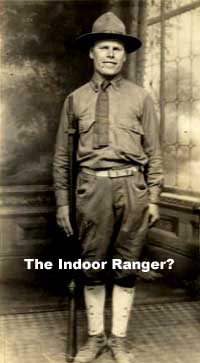|
FRESH STUFF DAILY |
|
|
||
|
|
||
|
|
||
|
SEE ALL SIGNED BOOKS by J. Dennis Robinson click here |
||
Page 2 of 3
The Portsmouth economy was stagnant in the 1930s. Jobs were hard to come by and, according to a WPA survey, a large portion of the families living in Puddle Dock were on government relief. Up to 1.5 million motorcars passed through the center of town each summer and over the new Memorial Bridge leading to Maine. But few cars stopped. The Maritime Village plan cleverly diverted all that traffic through the restored waterfront with its colonial homes and tall ships. The goal was to lure tourists out of their cars and into Portsmouth shops, restaurants and historic house museums. Tourists could buy a "strip ticket" allowing them to see any of the museums in "Old Portsmouth" for one price.
The proposal called for the entire portion of the town to be taken by eminent domain. All 63 property owners are listed in the WPA proposal with a plan for compensating them. An estimated 250 families lived in the Restoration Area during the Great Depression, an area that extended beyond Puddle Dock down Marcy Street as far as Pleasant Street. Many of the families were renters, newly arrived immigrants living on subsistence incomes. Howells and Decatur hoped to move those families to clustered housing developments nearby that included gardens, parks and playgrounds. They also planned to draw their work force from the same unemployed people living in the area. Puddle Dockers, therefore, would be paid by the government to restore their own neighborhood, which the planners felt would improve their sense of community pride. But to make this happen, the neighborhood had to be officially declared a "slum" by the federal government. The dilapidated houses, a series of junkyards, the ethnic diversity and low income of its residents all contributed to the government classification. Although the local "red light" district on Water Street had been largely cleaned up since 1912, the reputation clearly influenced the official classification of the region as a "blighted" zone. For historian Decatur, the best part of the plan was that it kept history alive. By restoring old homes and building old boats in the area, a host of fading maritime trades could be recaptured and passed on to future generations. As in the 18th century, the Portsmouth waterfront would again be home to blockmakers, sailmakers, joiners, blacksmiths and the like, employed to reconstruct historic tall ships for the maritime tourism industry. Artisans would also be able to restore and purchase dilapidated homes in the area with government assistance, thus allowing poor renters to become homeowners. A key member of the National Park Service visited Portsmouth in 1935 and reported enthusiastically to his director. "I am convinced that such a development would rival Williamsburgh in popularity," he wrote. Portsmouth was frequently compared to the recently opened outdoor museum in Virginia. Ten years later in 1944, still pushing the Portsmouth maritime village idea in a letter to President Franklin D. Roosevelt, John Mead Howells trumpeted the waterfront project as even "greater than Williamsburgh". Portsmouth was more authentic than other "recreated" museums like Sturbirdge Village, he argued, since all the original colonial houses, taverns, mills, wharves and warehouses already existed.
Please visit these SeacoastNH.com ad partners.
News about Portsmouth from Fosters.com |
| Friday, April 19, 2024 |


|
Copyright ® 1996-2020 SeacoastNH.com. All rights reserved. Privacy Statement
Site maintained by ad-cetera graphics

 HISTORY
HISTORY



 And there was more. An updated 1936-7 version of the proposal called for a bridge leading to the city-owned Peirce Island, site of the nation’s only intact earthwork fort, dubbed Fort Washington during the American Revolution. (The site has since become a sewer treatment plant, and its historic value destroyed.) The planned Restoration Area also included the William Pitt Tavern, then nearly in ruins, Point of Graves colonial cemetery, a revamped tidal mill, the restored "swing bridge" and the historic Liberty Pole, as well as the site of the 1631 Great House. The plan also called for the restoration of Portsmouth’s original colonial statehouse that once stood in the middle of Market Square. Although a small piece of the building had survived, Howells and Decatur hoped to rebuilt it into a grand welcoming center for the hordes of tourists that were sure to come.
And there was more. An updated 1936-7 version of the proposal called for a bridge leading to the city-owned Peirce Island, site of the nation’s only intact earthwork fort, dubbed Fort Washington during the American Revolution. (The site has since become a sewer treatment plant, and its historic value destroyed.) The planned Restoration Area also included the William Pitt Tavern, then nearly in ruins, Point of Graves colonial cemetery, a revamped tidal mill, the restored "swing bridge" and the historic Liberty Pole, as well as the site of the 1631 Great House. The plan also called for the restoration of Portsmouth’s original colonial statehouse that once stood in the middle of Market Square. Although a small piece of the building had survived, Howells and Decatur hoped to rebuilt it into a grand welcoming center for the hordes of tourists that were sure to come.














